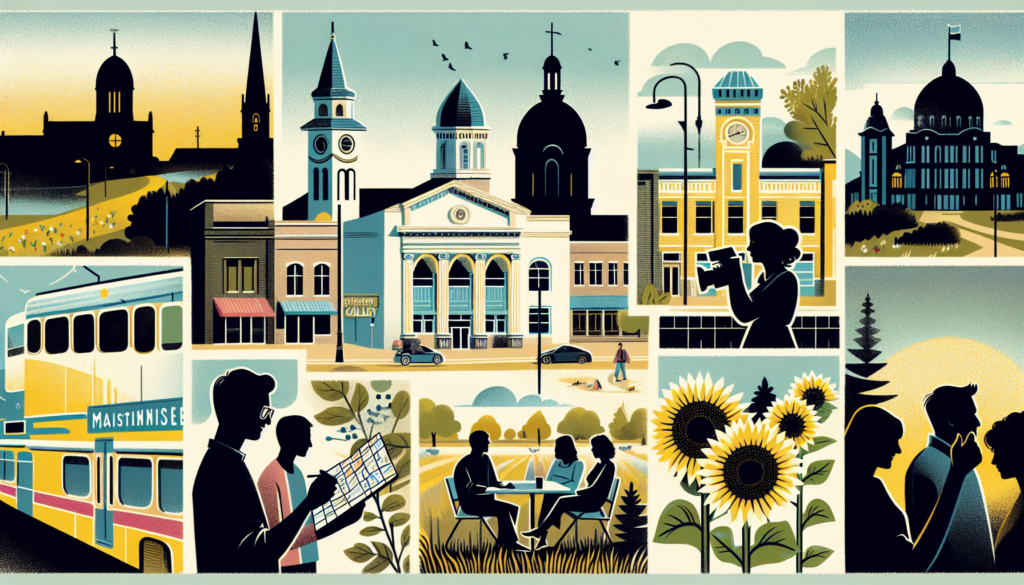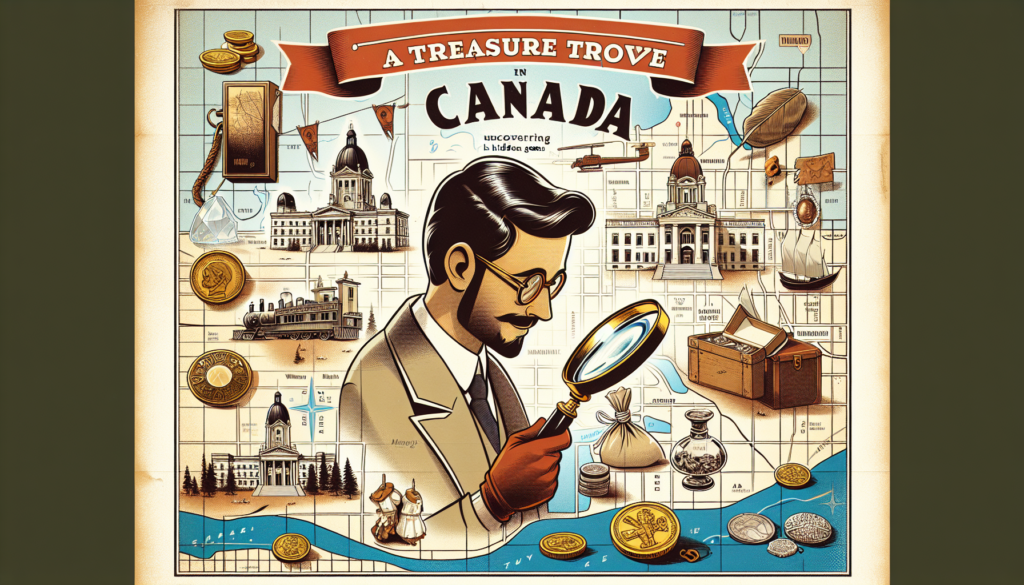Embarking on the journey to Canadian citizenship marks a pivotal moment in an individual’s life, a path illuminated by “Discover Canada: The Ultimate Citizenship Guide”. This official study guide, integral to the citizenship application process, lays out the foundational knowledge of Canada’s rich history, the structure of its government, symbolic regions, and the rights and responsibilities bestowed upon its citizens [1]. Available in various accessible formats such as online, audio, eBook, and print, the guide serves as an indispensable resource for newcomers navigating through the complex terrain of immigration Canada, providing essential links to determining eligibility, completing the citizenship application, and understanding the ceremonial significance of Canadian citizenship [1].
As the citizenship test pivots around the comprehensive information contained in “Discover Canada”, this ultimate guide becomes a beacon for those striving to understand the core values and principles that underpin Canadian society. It presents a harmonized blend of traditional knowledge and modern insights into indigenous peoples, national security, and the vibrant mosaic of Canadian culture [1]. In this article, we will look at things such as ‘Discover Canada: The Ultimate Citizenship Guide’, ‘canadian citizenship test’, and ‘rights and responsibilities’, aims to illuminate the pathway for aspiring citizens. It will delve into the intricacies of the application process, citizenship test preparations, and the profound journey towards becoming a part of the Canadian tapestry.
Understanding the Canadian Citizenship Application Process
Understanding the Canadian Citizenship Application Process involves several critical steps, each designed to ensure applicants are well-prepared and meet all necessary criteria for citizenship. Here’s a closer look at the key components of this process:
- Eligibility and Application Submission:
- Applicants must have lived in Canada for at least 1,095 days within the five years immediately before applying [4].
- The application process includes meeting eligibility requirements, submitting the required documents, and completing the application form [4].
- It’s important to use the application form and guide for Canadian citizenship, specifically for adults under Subsection 5(1) CIT, with a version date of October 2020 or later [4].
- Language and Knowledge Requirements:
- Applicants between 18 and 54 years old must meet language and knowledge requirements, ensuring they can effectively communicate in either of Canada’s official languages and have a good understanding of Canada’s history, values, institutions, and symbols [4].
- Applicants must not have any unfulfilled conditions related to their permanent resident status, be under a removal order, or be inadmissible or prohibited on criminal or security grounds [4].
- Citizenship Test and Online Testing:
- Most applicants are invited to take the test online, receiving an email notification and must complete the test within 21 days of the invitation [2][5].
- Applicants have 30 calendar days to complete the online test, with up to 3 chances within that period. If an applicant fails, they will be given a new date to retake the test, which is noted to be easier on the second attempt [2][3].
- The citizenship test is a crucial part of the application process, assessing the applicant’s understanding of Canada’s values, history, and responsibilities [2][7].
It’s essential for applicants to be aware that the five-year eligibility period refers only to the five years before the date the application is signed [4]. Additionally, applicants could lose their present nationality or citizenship upon becoming Canadian citizens, highlighting the importance of understanding all implications of the application process [4]. The process is designed to be comprehensive and rigorous, ensuring that all new citizens are well-prepared to take on the rights and responsibilities that come with Canadian citizenship.
The Significance of the Canada Citizenship Test
The Canadian Citizenship Test is a pivotal component in the journey towards becoming a Canadian citizen, designed to assess an applicant’s knowledge of Canada’s history, government, geography, and the rights and responsibilities of citizenship. Here’s a breakdown of what to expect:
- Format and Content:
- The test comprises 20 questions, which can be either multiple-choice or true/false [2].
- Topics covered include Canada’s history, geography, economy, government, laws, and symbols [2].
- Applicants are tested on their understanding of the rights and responsibilities of Canadian citizens, as well as specific information about Canada’s political and physical geography, and questions tailored to the applicant’s region [6].
- Scoring and Language Assessment:
- To pass, applicants must correctly answer at least 15 out of 20 questions, equating to a passing score of 75% [2][6].
- The test is available in both of Canada’s official languages, English and French, and lasts for 45 minutes [2][6].
- Language skills are evaluated through a review of language proof, assessment of speaking ability, and an evaluation of language level during the citizenship test. A Level 4 score on the speaking and listening portions of the Canadian Language Benchmarks (CLB) or the Niveaux de compétence linguistique canadiens (NCLC) is considered ‘adequate’ [8].
- Retakes and Accommodations:
- Applicants have up to three attempts within a 30-day period to pass the online test [2].
- For those who require it, accommodations such as Braille, large-print or oral versions of the test, extra time, or the option to take the test in person are available [2].
- In the event that an applicant fails the test three times, they will be invited to a hearing with a citizenship official [2].
The Canadian Citizenship Test, rooted in the “Discover Canada: The Rights and Responsibilities of Citizenship” study guide, not only evaluates an applicant’s knowledge of Canada but also their language abilities in English or French [2][6][7][8]. This ensures that new citizens are well-informed about their new country and are capable of effectively communicating in one of the official languages, thereby facilitating their integration into Canadian society [9].
Study Resources for the Citizenship Exam
For those preparing for the Canadian citizenship test, a wealth of resources is available to aid in study and comprehension. Here are some of the key materials and tools that can significantly enhance the learning experience:
- Official Study Guides:
- “Discover Canada: The Rights and Responsibilities of Citizenship” serves as the official study guide, available for free in various formats including online, MP3, PDF, eBook, or a paper copy from Citizenship and Immigration Canada [1][2].
- “Canadian Citizenship: A Practical Guide to Immigration & Citizenship” by Joe Serge, providing detailed insights into eligibility, dual and multiple citizenship with 209 pages [11].
- “Canadian Citizenship Made Easy: A Study Guide in Simple English” is accessible in both paperback for $21.00 and Kindle version for $6.99, catering to those who prefer simple language [10].
- Practice Tests and Additional Learning Tools:
- The library and online platforms offer citizenship practice tests to simulate the actual test environment, helping to familiarize applicants with the format and types of questions [12].
- Learning Express Library and Citizenship Counts! provide extensive resources, including practice exams and interactive tools like videos and quizzes for an engaging study experience [12][14].
- The Canadian Citizenship Test Study Guide by Complete Test Preparation Inc. includes over 150 practice test questions, prepared by exam experts, available in paperback format [13].
- BrainFuse Adult Learning Centre and LearningExpress Library Canada offer access to Canadian Citizenship Practice Tests and live tutors for study help, addressing specific questions and concerns [14].
- Supplementary Reading Materials:
- A variety of books are available at the library to complement study efforts, including titles like ‘Now You Know Canada’, ‘The Canadian Constitution’, and ‘Discover Canada’, among others, providing a broader understanding of Canada’s history, government, and culture [14].
- The Discover Canada study guide itself is a 68-page document that not only prepares applicants for the test but also offers pointers on how to apply for citizenship and answer practice questions [14].
These resources, when utilized effectively, can significantly boost an applicant’s confidence and readiness for the Canadian citizenship test. Practice tests, in particular, are crucial for effective learning as they require active engagement with the material, reinforcing knowledge and identifying areas that may need further study [3].
Rights and Responsibilities of Canadian Citizens
Embarking on the pathway to Canadian citizenship not only opens a realm of opportunities but also bestows upon individuals a set of rights and responsibilities that are foundational to the Canadian society. This segment, deeply rooted in the ethos of “Discover Canada: The Ultimate Citizenship Guide”, delineates these aspects to provide a comprehensive understanding for newcomers and aspirants of Canadian citizenship.
Rights of Canadian Citizens:
- Fundamental Freedoms and Democratic Rights:
- Freedom of Conscience and Religion: Citizens have the liberty to practice any religion or abstain from it [16][17].
- Freedom of Thought, Belief, Opinion, and Expression: This includes freedom of speech and of the press, ensuring a society where ideas and opinions can be freely exchanged [16][17].
- Freedom of Peaceful Assembly and Association: Canadians are free to gather and form associations without interference [16][17].
- Right to Vote and Run for Office: Every citizen has the right to participate in the democratic process, contributing to the country’s governance [17].
- Mobility Rights:
- Legal and Equality Rights:
Responsibilities of Canadian Citizens:
- Civic Duties:
- Obeying the Law: A fundamental duty of all citizens to ensure the rule of law [16][19].
- Serving on a Jury: When called upon, citizens must participate in the judicial process, contributing to the administration of justice [16].
- Voting in Elections: Engaging in the democratic process is not just a right but also a responsibility to shape the nation’s future [16][19].
- Community Engagement:
- National Service:
- No Compulsory Military Service: However, serving in the Canadian Forces or emergency services like police or fire departments is a noble way to contribute to the country [16].
The fabric of Canadian society is woven with these rights and responsibilities, ensuring a balanced and harmonious coexistence. They are protected under the Canadian Charter of Rights and Freedoms and, in specific regions like Ontario, the Ontario Human Rights Code, underscoring the nation’s commitment to uphold these principles [19]. Through understanding and embracing these rights and responsibilities, citizens and newcomers alike contribute to the vibrant, inclusive, and dynamic mosaic that is Canada.
The Oath of Citizenship
The Oath of Citizenship stands as a solemn vow, representing a commitment to the values and duties that come with being a Canadian citizen. It is not merely a formality but a meaningful step in the journey of becoming an integral part of Canada’s diverse and inclusive society. The following points elucidate the significance and components of the Oath of Citizenship:
- Core Elements of the Oath:
- Solemn Declaration: Candidates pledge to obey Canadian laws and fulfill their duties as citizens, embodying a promise to uphold the country’s values [20].
- Allegiance: The Oath includes a pledge of allegiance to King Charles the Third, reflecting Canada’s constitutional monarchy and the historical roots of the Oath [21][22][23].
- Recognition of Indigenous Rights: It explicitly acknowledges the Aboriginal and treaty rights of First Nations, Inuit, and Métis peoples, showcasing Canada’s commitment to reconciliation and diversity [21][23].
- Bilingual Versions: The Oath is available in both of Canada’s official languages, English and French, ensuring inclusivity and accessibility for all citizenship candidates [24].
- Legal and Ceremonial Context:
- Citizenship Act Reference: The Oath is outlined in the Citizenship Act (R.S.C., 1985, c. C-29), which governs the legal framework of citizenship in Canada, including rights, responsibilities, and the citizenship process [21].
- Updated Version: Amendments to the Citizenship Act in 2021 introduced the current version of the Oath, reflecting contemporary values and the evolving nature of Canadian society [21].
- Citizenship Ceremony: The recitation of the Oath occurs during the citizenship ceremony, marking the final legal requirement for becoming a Canadian citizen. This ceremony is a celebratory event that officially welcomes new citizens into the Canadian family [20][23].
- Historical and Symbolic Significance:
- Roots in the UK Oath of Allegiance: The Canadian Oath of Citizenship is derived from the oath of allegiance taken in the United Kingdom, with the modern form being implemented in 1689. This historical lineage underscores the deep-rooted traditions and values that have shaped Canada [22].
- Establishment: The Canadian Oath of Citizenship was officially established with the enactment of the Citizenship Act in 1947, signifying a defining moment in Canada’s history as it began to shape its own identity separate from colonial ties [22].
- Pledge to a Person: In Canada, loyalty is pledged to the reigning monarch, representing all Canadians, rather than to a document, banner, or geopolitical entity. This unique aspect highlights the personal connection and commitment to the collective Canadian identity [23].
The Oath of Citizenship encapsulates the essence of what it means to be Canadian, weaving together the threads of legal obligation, historical continuity, and a shared commitment to the values and principles that define Canada. It is a profound declaration that binds individuals to their new homeland, with a promise to contribute positively to the fabric of Canadian society.
Canada’s History and Culture
Canada’s history and culture are a rich tapestry woven from the threads of its indigenous peoples, European settlers, and a mosaic of immigrant populations. Each group has contributed distinct threads to the national identity, creating a vibrant and diverse cultural landscape.
- Indigenous Peoples and Early Settlements:
- The first inhabitants, including the Inuit and First Nations, crossed the Bering Straits from northern Asia, establishing cultures that date back thousands of years before European contact [26][27].
- Vikings, led by Bjarni Herjolfsson and later Leif Erikson, were the first Europeans to sight and land on Canadian shores around AD 986, with a settlement established at L’Anse aux Meadows [26].
- The French, under Samuel de Champlain, founded the first permanent European settlements in the early 17th century, in present-day Nova Scotia and Québec City, marking the beginning of a significant French influence in Canada [26][27].
- Cultural Development and Diversification:
- The 19th century saw an influx of immigrants from across the globe, each bringing their own customs, languages, and traditions, contributing to Canada’s multicultural identity [27].
- The Canadian Pacific Railway, completed in 1885, not only connected the country coast to coast but also facilitated the movement of people and cultures, further diversifying the Canadian mosaic [26].
- Canada’s official bilingualism, with English and French as the national languages, reflects the country’s historical roots and commitment to inclusivity. This constitutional protection of languages is a cornerstone of Canadian identity [25].
- Cultural Expressions and Contributions:
- Canadian humor, characterized by irony, parody, and self-deprecation, plays a significant role in the national identity, offering a unique perspective on Canadian life [25].
- The country’s arts scene, including a thriving theatre landscape with festivals like the Stratford Shakespeare Festival, showcases Canada’s commitment to cultural expression and appreciation [25].
- Sports such as ice hockey and lacrosse, considered national pastimes, reflect the importance of physical activity and community in Canadian society [25].
This exploration into Canada’s history and culture underscores the complexity and richness of the Canadian identity. It highlights how historical events, combined with the contributions of diverse groups, have shaped a unique cultural landscape that values inclusivity, diversity, and multiculturalism [25][26][27].
Understanding Canada’s Government System
Understanding Canada’s government system is pivotal for those navigating the pathway to Canadian citizenship, as it forms the backbone of the nation’s democratic values and principles. This section delves into the intricacies of Canada’s governmental structure, providing a clear and comprehensive overview.
- Government Structure:
- Parliamentary System: Canada’s government operates under a parliamentary system, characterized by a representative government where an elected assembly legislates [29].
- Constitutional Framework: The Canadian Constitution outlines the fundamental laws and principles of the government’s nature, functions, and limits [30].
- Bicameral Parliament: Consisting of the Senate and the House of Commons, it embodies the legislative branch of the government [29].
- The Senate, with 105 Senators appointed by the Governor General on the Prime Minister’s advice, represents regions, minorities, and special interest groups [30].
- The House of Commons, an elected assembly, represents the Canadian populace through members elected to represent defined electoral districts or constituencies [30].
- Executive and Judicial Branches:
- Legislative Process and Government Responsibilities:
- Bill to Law Process: A policy proposal undergoes review by the appropriate Cabinet Ministry, approval by the Cabinet, and introduction in Parliament. Parliament is not in session year-round, with specific sitting periods and processes for prorogation and dissolution for elections [29].
- Federal and Provincial Jurisdiction: The federal government handles national issues like defense and immigration, while provincial and territorial governments manage education, healthcare, and natural resources. Municipal governments are responsible for local services such as water and waste management [33].
Each layer of Canada’s government system, from its parliamentary structure to the division of responsibilities across federal, provincial, and municipal levels, underscores the country’s commitment to a balanced and fair representation of its citizens’ interests. This system, enriched by the “Discover Canada: The Ultimate Citizenship Guide”, not only facilitates effective governance but also ensures that the rights and responsibilities of Canadian citizens are upheld within a democratic framework [34].
Language Requirements and Support
Meeting the language requirements is a crucial step in the Canadian citizenship application process. Applicants aged 18 to 54 must demonstrate their ability to communicate effectively in either of Canada’s official languages, English or French, at the Canadian Language Benchmarks (CLB) Level 4 or higher. This proficiency ensures that new citizens can actively participate in Canadian society, from engaging in the democratic process to contributing to the community [35][8].
Proof of Language Proficiency:
- Accepted Documents: Applicants can submit diplomas, transcripts, or certificates from secondary or post-secondary programs conducted in English or French. In cases where the original documents are in another language, a certified translation into English or French must accompany the application [35].
- Educational Background: Evidence of having completed or attended a secondary or post-secondary program in English or French is considered valid proof of language proficiency. This acknowledgment extends to graduates from these programs, demonstrating an adequate level of language skills necessary for daily life and civic participation in Canada [35][37].
- Language Testing: For those who may not have formal education in English or French, passing an approved language test is an alternative way to meet the requirement. Recognized tests include IELTS, CELPIP (General and LS), TEF, TEFAQ, and TEF pour la naturalisation, among others. These tests assess listening and speaking skills, aligning with the CLB Level 4 or 5 standards for language proficiency [36][38].
Support and Accommodations:
- Medical or Cognitive Conditions: Applicants with specific medical, physiological, psychological, or cognitive conditions can request accommodations. These accommodations might include alternative testing formats or environments to ensure that all applicants have a fair opportunity to demonstrate their language proficiency [8].
- Compassionate Grounds: In exceptional circumstances, such as severe medical conditions or trauma, applicants may seek a waiver for the language requirement. This consideration is also extended to individuals with low levels of education or literacy in their first language, recognizing the diverse backgrounds of citizenship applicants [8].
Understanding and meeting these language requirements are fundamental steps toward achieving Canadian citizenship. They reflect Canada’s commitment to inclusivity and the active participation of its citizens in the rich tapestry of Canadian life.
Navigating the Citizenship Ceremony
Navigating the Citizenship Ceremony is the culminating step in the journey of becoming a Canadian citizen, encapsulating both the legal and symbolic transition into Canadian society. The ceremony, governed by the Citizenship Act, the Official Languages Act, and the Canadian Multiculturalism Act, underscores Canada’s commitment to diversity, inclusion, and bilingualism [41]. Here is a detailed guide to help applicants prepare for this significant event:
Preparing for the Ceremony
- Invitations and Scheduling: Applicants will receive an invitation to either a virtual or in-person ceremony, detailing the time, date, and format. It’s crucial to regularly check your application status for the latest information [39]. If you’re unable to attend on the scheduled date, promptly contact Immigration, Refugees and Citizenship Canada (IRCC) to request a rescheduling [40].
- What to Bring:
- Essential documents include your ceremony notice, a signed copy of the Permission Release and Consent form, your Permanent Resident card or Confirmation of Permanent Residence, and your Record of Landing if applicable [39][40].
- Two pieces of personal identification, with at least one featuring a photograph and signature. If IDs are not in English or French, a translation and affidavit from the translator are required [40].
- All passports and travel documents, both current and expired, that were listed on the application form. Optionally, a holy book of your choice for swearing the Oath of Citizenship [40].
During the Ceremony
- The Oath of Citizenship: A pivotal moment where participants pledge allegiance and loyalty to Canada, either by swearing or affirming the oath. This can be done on a holy book of the participant’s choosing [43].
- Receiving the Citizenship Certificate: After signing the Oath or Affirmation of Citizenship form, new citizens are presented with their citizenship certificate, marking their official status as Canadian citizens [40].
- Language and Bilingualism: Ceremonies are conducted in English, French, or bilingually. Applicants should communicate their preference for a bilingual ceremony upon receiving their notice [39].
Special Considerations
- Accommodations: For those requiring assistance, accommodations for taking the oath are available. Waivers from taking the oath are only granted if a mental disability prevents understanding of its significance [39].
- Guests and Attire: The ceremony is a formal event, and attendees are encouraged to dress appropriately. While guests are welcome to join, space limitations may apply. For those bringing young children, consider having a guest present to attend to them if needed [44].
The Canadian Citizenship Ceremony not only confers the rights and responsibilities of citizenship but also serves as a celebration of the diverse fabric that constitutes Canada. It’s a moment of pride, reflection, and anticipation for what lies ahead as part of the Canadian family.
Conclusion
Embarking on the journey to Canadian citizenship is a venture filled with anticipation and fulfillment, encompassing a wealth of knowledge and preparation, as outlined throughout this article. From navigating the intricate process of application, understanding the rights and responsibilities that come with Canadian citizenship, to the symbolic moment of taking the Oath of Citizenship, each step is significant. The pathway to becoming a Canadian citizen, deeply rooted in the values and principles of the nation, requires a diligent understanding of its historical, cultural, and governmental foundations, all of which “Discover Canada: The Ultimate Citizenship Guide” efficaciously covers.
As we conclude, it’s clear that the odyssey towards Canadian citizenship transcends mere procedural prerequisites; it’s an embrace of Canada’s rich tapestry of history, culture, and democratic values. The guide remains an invaluable resource for prospective citizens, illuminating the depth and breadth of what it means to call Canada home. For those embarking on this profound journey, the ultimate destination is not just about obtaining a certificate; it’s about becoming part of a diverse and inclusive society. Engage deeply with the essence of Canada and let “Discover Canada: The Ultimate Citizenship Guide” be your compass on this journey.
FAQs
References
[1] – https://www.canada.ca/en/immigration-refugees-citizenship/corporate/publications-manuals/discover-canada.html
[2] – https://www.canada.ca/en/immigration-refugees-citizenship/services/canadian-citizenship/become-canadian-citizen/citizenship-test.html
[3] – https://www.canadavisa.com/canada-immigration-discussion-board/threads/pro-tip-preparing-for-the-citizenship-test.788503/
[4] – https://www.canada.ca/en/immigration-refugees-citizenship/services/application/application-forms-guides/guide-0002-application-canadian-citizenship-under-subsection-5-1-adults-18-years-older.html
[5] – https://canoo.ca/the-canadian-citizenship-test/
[6] – https://en.wikipedia.org/wiki/Canadian_Citizenship_Test
[7] – https://total.law/blog/canadian-citizenship-test/
[8] – https://www.cicnews.com/2024/01/what-language-level-do-i-need-to-apply-for-canadian-citizenship-0142111.html
[9] – https://tribuneonlineng.com/looking-to-move-canada-understand-the-importance-of-canadian-citizenship-test/
[10] – https://www.amazon.com/Canadian-Citizenship-Made-Easy-English/dp/1519121296
[11] – https://www.amazon.com/Canadian-Citizenship-Practical-Guide-Immigration/dp/0385253834
[12] – https://www.torontopubliclibrary.ca/new-to-canada/citizenship.jsp
[13] – https://www.amazon.com/Canadian-Citizenship-Test-Study-Guide/dp/1772453862
[14] – https://markhampubliclibrary.ca/blogs/post/5-ways-to-study-for-the-canadian-citizenship-test/
[15] – https://getgoldenvisa.com/canadian-citizenship
[16] – https://www.canada.ca/en/immigration-refugees-citizenship/corporate/publications-manuals/discover-canada/read-online/rights-resonsibilities-citizenship.html
[17] – https://www.justice.gc.ca/eng/csj-sjc/rfc-dlc/ccrf-ccdl/rfcp-cdlp.html
[18] – https://www.canada.ca/en/canadian-heritage/services/how-rights-protected/guide-canadian-charter-rights-freedoms.html
[19] – https://settlement.org/ontario/immigration-citizenship/citizenship/rights-and-responsibilities-of-citizenship/what-are-my-rights-and-responsibilities-as-a-canadian-citizen/
[20] – https://www.canada.ca/en/immigration-refugees-citizenship/news/2019/05/the-oath-of-citizenship.html
[21] – https://laws-lois.justice.gc.ca/eng/acts/c-29/page-8.html
[22] – https://en.wikipedia.org/wiki/Oath_of_Citizenship_(Canada)
[23] – https://www.canada.ca/en/immigration-refugees-citizenship/corporate/publications-manuals/discover-canada/read-online/oath-citizenship.html
[24] – https://www.canadavisa.com/canadian-citizenship-ceremony.html
[25] – https://en.wikipedia.org/wiki/Culture_of_Canada
[26] – https://www.iexplore.com/articles/travel-guides/north-america/canada/history-and-culture
[27] – https://journals.lib.unb.ca/index.php/mcr/article/view/18723/20471
[28] – https://www.canadacis.org/blog/the-ultimate-guide-to-canadas-immigration-system/
[29] – https://www.wilsoncenter.org/sites/default/files/media/documents/article/canada_101.pdf
[30] – https://www.ourcommons.ca/procedure/our-procedure/parliamentaryFramework/c_g_parliamentaryframework-e.html
[31] – https://en.wikipedia.org/wiki/Government_of_Canada
[32] – https://learn.parl.ca/understanding-comprendre/en/canada-system-of-government/the-branches-of-government/
[33] – https://study.com/academy/lesson/canadian-government-structure-type-facts.html
[34] – https://www.britannica.com/place/Canada/Cultural-life
[35] – https://www.canada.ca/en/immigration-refugees-citizenship/services/canadian-citizenship/become-canadian-citizen/eligibility/language-proof.html
[36] – https://www.legallanguage.com/legal-articles/language-requirements-citizenship/
[37] – https://www.immigrationphysicianottawa.ca/site/blog-ottawa/2022/03/31/everything-you-need-to-know-about-the-language-requirements-for-canadian-citizenship
[38] – https://www.immigration.ca/citizenship-language-requirement/
[39] – https://www.canada.ca/en/immigration-refugees-citizenship/services/canadian-citizenship/become-canadian-citizen/citizenship-ceremony.html
[40] – https://total.law/blog/how-to-prepare-for-the-canadian-citizenship-ceremony/
[41] – https://www.canada.ca/en/immigration-refugees-citizenship/services/canadian-citizenship/take-part-citizenship/host-citizenship-ceremony.html
[42] – https://www.cicnews.com/2024/02/the-four-types-of-canadian-citizenship-ceremonies-0239495.html
[43] – https://www.youtube.com/watch?v=_BolmzWM9PE
[44] – https://canoo.ca/how-to-prepare-for-your-citizenship-ceremony/
![🇨🇦 Discover Canada: The Ultimate Citizenship Guide [Full Audio Book]](https://jahplay.com/wp-content/uploads/2024/04/Discover-Canada-The-Ultimate-Canadian-Citizenship-Guide-1-1024x585.png)



